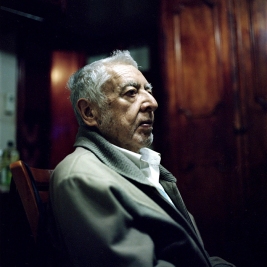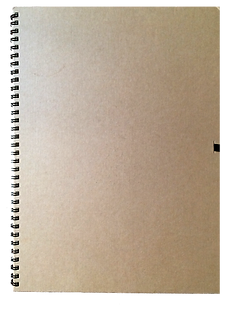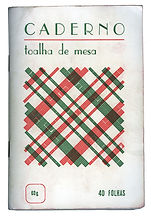
June’s featured photographer is Brenda Moreno
Brenda Moreno, 1984. She is a Mexican visual artist who works primarily with photography. She started studying design in Mexico City, her hometown. Later she decided to move to Madrid, Spain, to study an International Master’s Degree in Documentary Photography at EFTI. She obtained a scholarship for a second Master’s Degree in Documentary Photography as an internt at the BlankPaper School, in the same city. She has been involved in various group exhibitions as well as photographic festivals and seminars. After finishing the Jovenes Creadores scholarship, awarded by CONACULTA, through FONCA, in Mexico. She is now developing her photographic projects, in Mexico and Spain. The themes are identity, memory, family, dreams and horses, which are in sketchbooks with medium format discards and collage.
b to b – project
 My intention, through images of my family and the ones I choose to call a family, is trayin to convey the roles we fulfil, how we find comfort within them and the way these help ro resolve actions that don’t really fuction in our surroundings, but that we tend to change over time.
My intention, through images of my family and the ones I choose to call a family, is trayin to convey the roles we fulfil, how we find comfort within them and the way these help ro resolve actions that don’t really fuction in our surroundings, but that we tend to change over time.
These workbooks encompass memories, dreams, and ideas that build our identity. I combine pictures, medium format and fragments off these as collages. Discards and mistakes also fall into the same process that form part of this project.
In my need to search on identity, I follow processes that take into account moments, details and exploration of materials and errors of everyday life.












Interview with Brenda Moreno
How did you discover photography?
At the age of thirteen I found a film camera under my mother’s bed. From that moment I was gripped by curiosity which led me to attend photographic workshops. I remember going to one in a secondary school but the teacher told me I was too young to be there. I then went on to study at various schools. I first studied graphic design and then I changed to visual communication but I was always driven to learn photography. This drive led me to Madrid where I did a Masters. After completing the course, I did another one in Madrid and ended up living there for six years after, and well…in a few words this is how I began to get closer to photography which also guided my academic choices.
How did your project, b – to – b, featured in Foto-Féminas this June, come about? What inspired the title? How long did you work on it or do you still see it as a work in progress?
Yes, I’ve already finished the project. I began working on it…well, it’s actually difficult to know the exact start date but I would say around 2012 because I had just begun studying at my second school. When I started there I was faced with a series of questions such as: why do I take photos? Why do I want to talk about certain themes? What are these themes? This prompted a personal exploration and I began to work with collage off-cuts. I started putting together notebooks, and in reality, at that point I would say I had started the project, because part of this exploration connects to this project, the first that I finished, therefore…I like the idea of questioning myself by talking about other projects because I myself was unsure, I didn’t have answers to certain questions that I was asking and therefore this project became about identity.
The name, b – to – b, relates to my name, Brenda, but also it relates a little to ‘being for being’, like a cyclical trip, an introspection, an identity within my identity, in my family and those who aren’t family, such as my friends; those who are by your side. I began from there and also started resolving some of my own issues unconsciously; not looking at them in any particular way and from this I started my project. Then in 2014, I was given a grant to go back to Mexico which is where my project ended as I was missing my family and my country. I go back and forth every year but at the time I was in both places more often than usual which is how I concluded b – to – b. I now have the mock-up and am exploring whether it can be released somewhere or if I can publish it myself in the form I chose, a book.
Did you always know you would produce a book from, b – to – b or was it something that simply developed organically during your creative process since 2012?
When I began the project I was working with notebooks, therefore I was already working with a similar format. There were various paths I could have taken, such as making a fanzine or an artist’s book, for example. It’s a personal exploration which was great to develop during the process but it needed a format, which was actually influenced by the school where I was studying at the time. I was at Blank Paper, Madrid, which started off as quite a small institution which grew over time. It specializes in photo books, so when its director gave us our first class, he praised the concept of ‘the book’, so my exploration naturally began from there. I also had my grant at the time so I was always in the library and I felt very inspired by my studies, constantly looking at book, after book, after book. The whole time I was thinking about the format for my project, which was destined to be a book regarding my various experiences at Blank Paper. At the school they encourage multimedia work but my project was much more handcrafted; maybe at the time I didn’t see the project going in that multimedia direction. Though I suppose there are some media that still influence me… editions of film, their format, their design, it’s a wonderful language.
Something that really caught my attention when I saw your webpage were the albums and the way you divided them but also this story of the self-portrait. You include portraits of other people and you cut them up. But in each page you have a positive and a negative of each image. Could you talk a little bit about the themes of self-portrait, other portraits and how you united them all?
Well at the beginning it was unconscious. I later began revising the albums from a more psychological viewpoint, related to ‘reflections’. For example when you meet someone, you may see part of yourself in them and therefore you project yourself onto that person. Therefore it became a theme of identity. I reflected on others and considered how others reflect on themselves which further helped me recognize things in myself. This exploration grew, consisting of 12 notebooks which prompted a very complicated and extensive editing process, as it involved a continuous exploration of various themes. The photos were in medium format, very formal, very sober and, on the other hand, later on, some portrayed aspects of personal exploration. I talked about my family but I later began exploring how to create something more universal, less intimate and personal because universal things may interest someone further and can also cause them to reflect on themselves, so at that point it was a bit of a muddle. I was listening to various opinions and I finally had to leave some of them out and save them for another time. I later realised that another thing which really helped me was going back to Mexico to see my parents who I hadn’t lived with since I was 18. It was strange returning at the age of 32. It really helped me to finish the project because I was able to understand their personalities from another point of view, not just as a daughter but from my project’s perspective.
Tell us about your most recent projects and your creative processes.
I find it really interesting because the first process, the notebooks, took me a long time, but this also gave me the opportunity to explore whatever caught my attention or whatever I was curious about. It’s strange because the way I work varies. I spent a lot of time focusing on one specific thing during my previous projects but now I am working on four at the same time, little by little. This is where the process of exploration comes from. For example, a small aspect of my investigation involved looking at Christmas lights and how they represent different economies, exploring various spaces within different countries with differences in luminosity. These various views come from a photo, representing a house, which says a great deal about the family who live there, which then became part of the first edition and then the first mock-up, therefore the series of Christmas photos also ended up in the b – to – b project, next it was a horse series, also in b – to – b, which I continue working on.
There is another project that is taking me a lot of time to develop because it involves a lot of travelling. I am visiting various indigenous communities on my travels, in order to explore their culture and world views. This has a lot to do with my country’s identity and isn’t necessarily about me or my immediate surroundings but explores wider themes based around identity. In the end everything connected and related a lot to the first project which was based more on my own personal experiences. Therefore this exploration came from taking advantage of working freelance. If you have time and energy you’ve got to go for it. The explorations I prefer doing are the ones I learn something from. For example, in order to learn more about the worldviews of indigenous communities I enrolled on a diploma course in cookery and culture to learn more about the ingredients used by indigenous people, about pre-Hispanic themes, and also crafts, for example loom work which gives me the opportunity to spend time with the women who practice this tradition. I am trying to nourish myself with these things which will remain with me regardless of what I do next, informing my future work. I think all photography should do this, allow you to express things in your head that are already there. I enjoy it so much, I enjoy the exploration, which can become complicated because if you don’t focus then a lot of your ideas can disperse and you can feel like nothing is happening. This is something that worries me when I’m working on various projects at the same time. As I finish various projects I am still busy making photos and well, this is how my process works.
To see more of Brenda’s work, here.
La fotógrafa del mes de Junio es Brenda Moreno
Brenda Moreno, 1984. Artista Visual mexicana que trabaja principalmente con la fotografía, inicio estudios de diseño en México DF su ciudad natal, más tarde decide mudarse a Madrid España, para estudiar el Master Internacional de Fotografía en EFTI. Entra como becaria a cursar su segundo Master en Fotografia Documental en la escuela BlankPaper, en la misma ciudad. Ha participado en distintas exposiciones colectivas así como festivales y encuentros fotográficos, formo parte de la beca Jóvenes Creadores, otorgada por el CONACULTA a través del FONCA, en México. Se encuentra desarrollando sus proyectos, entre México y España desde el año 2010.
proyecto – b to b
 Es un viaje cíclico donde hablo de mi familia y de aquella que no lo es, pero que puedo elegir. De los roles que cumplimos con, los refugios que encontramos en ellos y de cómo estos a su vez, nos ayudan a resolver cosas que no funcionan en nuestro entorno cercano pero que vamos modificando a través del tiempo. De la memoria, los patrones que repetimos, lo que reflejamos en el otro, el paso de el tiempo, los sueños e ideas que construyen nuestra identidad.
Es un viaje cíclico donde hablo de mi familia y de aquella que no lo es, pero que puedo elegir. De los roles que cumplimos con, los refugios que encontramos en ellos y de cómo estos a su vez, nos ayudan a resolver cosas que no funcionan en nuestro entorno cercano pero que vamos modificando a través del tiempo. De la memoria, los patrones que repetimos, lo que reflejamos en el otro, el paso de el tiempo, los sueños e ideas que construyen nuestra identidad. 
Combino fotografía en medio formato y fragmentos de estas a manera de collage, en cuadernos de trabajo en donde voy estructurando el proceso, los descartes y errores entran en el mismo proceso que va dando forma al proyecto.
Entrevista con Brenda Moreno
Para saber más sobre los proyectos de Brenda, aquí.







